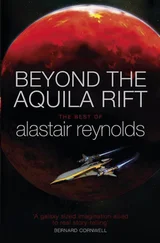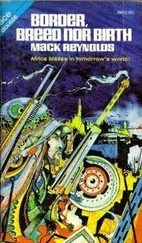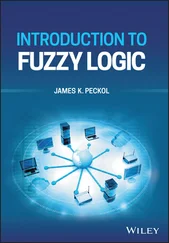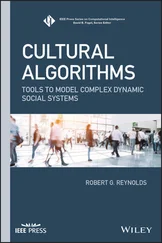| Proficient User |
C2 |
Can understand with ease virtually everything heard or read. Can summarize information from different spoken and written sources, reconstructing arguments and accounts in a coherent presentation. Can express him/herself spontaneously, very fluently and precisely, differentiating finer shades of meaning even in more complex situations. |
| C1 |
Can understand a wide range of demanding, longer texts, and recognize implicit meaning. Can express him/herself fluently and spontaneously without much obvious searching for expressions. Can use language flexibly and effectively for social, academic and professional purposes. Can produce clear, well-structured, detailed text on complex subjects, showing controlled use of organizational patterns, connectors and cohesive devices. |
| Independent User |
B2 |
Can understand the main ideas of complex text on both concrete and abstract topics, including technical discussions in his/her field of specialization. Can interact with a degree of fluency and spontaneity that makes regular interaction with native speakers quite possible without strain for either party. Can produce clear, detailed text on a wide range of subjects and explain a viewpoint on a topical issue giving the advantages and disadvantages of various options. |
| B1 |
Can understand the main points of clear standard input on familiar matters regularly encountered in work, school, leisure, etc. Can deal with most situations likely to arise whilst travelling in an area where the language is spoken. Can produce simple connected text on topics which are familiar or of personal interest. Can describe experiences and events, dreams, hopes & ambitions and briefly give reasons and explanations for opinions and plans. |
| Basic User |
A2 |
Can understand sentences and frequently used expressions related to areas of most immediate relevance (e.g., very basic personal and family information, shopping, local geography, employment). Can communicate in simple and routine tasks requiring a simple and direct exchange of information on familiar and routine matters. Can describe in simple terms aspects of his/her background, immediate environment and matters in areas of immediate need. |
| A1 |
Can understand and use familiar everyday expressions and very basic phrases aimed at the satisfaction of needs of a concrete type. Can introduce him/herself and others and can ask and answer questions about personal details such as where he/she lives, people he/she knows and things he/she has. Can interact in a simple way provided the other person talks slowly and clearly and is prepared to help. |
| Used with permission from Council of Europe. |
Proficiency scales do not necessarily indicate how long each level will take, with the exception of the CEFR. Some levels will not be achieved by some learners. Learners may also stagnate or step down on the scale without effort to improve their language abilities.
As you read this text, you will find many references to language proficiency levels. These will be general references, unless otherwise noted.
TESOL Is Highly Interdisciplinary
The discipline of TESOL draws upon other fields to inform their perspectives. For example, research from psychology provides important contributions on how children and adults grow, think, and learn, how first languages are acquired, and how the brain stores and processes information. From anthropology, we learn about culture, cultures, and cross-cultural interaction. From linguistics, we understand more about the structures, sounds, meanings, functions, and uses of language. The intersection of psychology and linguistics enhances understanding of the neurological processing of linguistic information in the brain. The field of foreign/world language teaching contributes insights into proficiency levels, traditional and interactive language methods, and assessment practices. From communications, we draw strategies of oral communication in formal talks and presentations as well as studies in cross-cultural and intercultural communications. English composition studies provide insights into the learning and teaching of writing to native speakers, writing genres and structures, patterns of written discourse, sentence-level written grammar, and argumentation. The various fields of teacher education, such as literacy, curriculum and instruction, educational diversity studies, and instructional assessment, offer insights into the instruction and assessment of reading by native speakers, curriculum development, academic content learning, lesson planning, lesson delivery, assessment design and interpretation, educational institutions, and culturally responsive instruction.
The TESOL specialist combines knowledge from all of these areas with second language acquisition theory (how people acquire/learn additional languages as well as the personal, sociocultural, and linguistic influences on the processes). The TESOL specialist applies this information to appropriate instructional planning, delivery, and assessment for ELLs at all ages from nursery school to university.
The discipline also interacts with academic content areas (i.e., subjects of literature, math, science, and social studies/history) as well as subjects considered “special topics” in the schools (i.e., music, art, and physical education). When TESOL specialists combine academic fields, this is called content-based ESL instruction (CBI) or sheltered content instruction, while in the European context this content and language integration is referred to as content and language integrated learning (CLIL), which is discussed in Part Two. CLIL holds both content and language as dual instructional goals integrating them equally to support simultaneous development of both knowledge bases.
Vocational content areas are studied by ELLs for professional purposes, such as aviation, law, business, engineering, design, tourism studies, etc. This intersection of vocational content and language study is English for specific purposes (ESP). You will find ESP courses listed as Business English or Legal English in adult education or university language programs.
Should I use the term second language acquisition or second language learning?
You may hear TESOL professionals use the phrases interchangeably or generally, meaning undertaking the development of an additional language. The two terms offer small, but meaningful distinctions for a TESOL professional. If you hear TESOL professionals discuss second language learning specifically, it means the study of English as an additional language in academic settings. Whereas, the use of second language acquisition specifically refers to situations in which individuals “pick up” a language in naturalistic settings, such as in conversations with friends, watching television, and/or reading for pleasure.
This distinction is one reason that language educators endeavor to create meaningful communication opportunities in the classroom that replicate natural conversational settings. If the language learning in classroom settings is more meaningful and authentic, it will be more useful and memorable for the learners.
Roles and Specializations of TESOL Professionals
The discipline of TESOL includes language teaching, teacher preparation and research, but also roles in developing curriculum, writing books and instructional materials and assessments, consulting, serving as a resource teacher, and leading and directing language programs.
TESOL has several unique areas of specialization and professional interest. A TESOL professional may choose a special focus in their work, which is one advantage of the field. This allows educators in the field to employ their unique strengths and build knowledge and skills in areas of individual interest, rather than focusing solely on language acquisition. Each specialization is specific to a context and learner population. For example, there are assessment organizations that specialize in the development of standardized tests on language proficiency for ELLs, such as the Test of English as a Foreign Language (TOEFL), International English Language Testing System (IELTS), Test of English for International Communication (TOEIC), and ACCESS tests. Individuals who work for Educational Testing Services (ETS), for example, who owns the TOEFL exam, focus on the design and implementation of testing questions and exams. They investigate the timing of questions and computer-adaptive test technology.
Читать дальше












